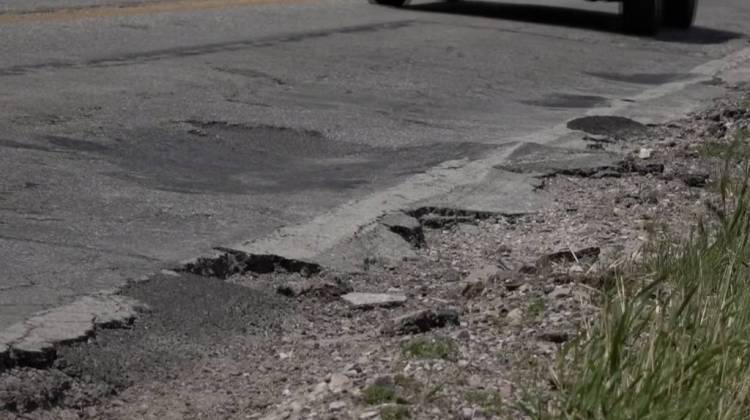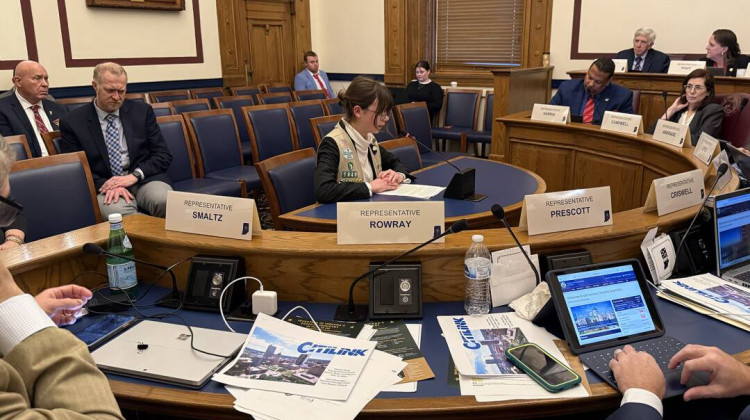As a first-grader growing up on Indianapolis’ College Avenue in Meridian-Kessler, a trip to the local Double 8 Foods was a good day. The piles of produce, tight lines of tin-colored cans and aisles of abundant dairy products all signaled a home-cooked meal to come.
My family, including my parents, sister and grandparents next door, couldn’t walk to the cramped store, but it was on a bus line. And the line of cars nearby was a telltale sign that the store at 46th and College was the closest grocer for miles.
Nearly three decades later, the Double 8 is gone and new data show that urban decay — what experts call disinvestment — also has left shells of former stores bookending the block of my childhood home. My family still lives there, in one of the city’s many food deserts.
Without access to fresh foods, people can face serious health problems. And a new study from SAVI at IUPUI’s Polis Center shows more than a quarter of Black Hoosiers live in food deserts — low-income areas without easy access to a supermarket.
“We wanted to answer the question: What would be the chances, if you move to this area, that you would be living far from a grocery store,” says Unai Miguel Andres, a mapping and data analyst who handled the research.
The study, created for Side Effects Public Media and the Indianapolis Recorder, highlights problem areas across the state. They include large swaths in Gary, along the shores of Lake Michigan, as well as parts of Posey, Greene and Crawford counties farther south.
The data also show that residents of Indiana’s urban areas are more likely to live in a food desert. More than 16 percent of city dwellers can’t reach a supermarket easily.
“If you're already on a really tight budget, that means that you're gonna have to spend either money on a bus or gas for your car if you even have one,” Andres says. “Still, it’s [a trip of] two hours that you cannot waste. If you had a store within a 10-minute walk down the road, you’d probably get more than just one item at a time and go more frequently.”
According to the U.S. Department of Agriculture, food deserts are low-income areas where at least a third of residents live more than a mile from a supermarket — or 10 miles in rural communities.
In Indianapolis, 208,000 people live in food deserts. And 10,500 households without a car are in a “transit food desert,” with no grocery store easily accessible by bus.
The lack of access to healthy food can have a wide-ranging health impact, experts say. Food deserts can contribute to a poor diet, leading to obesity and related illnesses such as diabetes.
“If you can only go to the grocery store once every other week because it's too far, you’re going to buy things that do not perish,” Andres says. “So it affects choices that you have. I also think it puts stress on people that are already stressed.”
And that can hit predominantly Black communities particularly hard.
“With poverty, [stores] may not always be in the heart of where are people of color reside,” says Dr. Virginia Caine, director of the Marion County Public Health Department.
It’s a fresh produce plague Rep. André Carson wants to reverse in the communities he represents – including Meridian-Kessler. About 20 percent of the residents In the 7th District live in a food desert and he says grocery stores are closing, leaving them to rely on fast food or convenience stores.
It’s also a problem nationwide. More than 29 million Americans — almost 10 percent of the population — live without ready access to affordable food, he says.
Carson, a Democrat, plans to reintroduce the Food Deserts Act to help shrink food deserts. The legislation would provide federal money for loans to grocery stores in these areas. It aims to ensure that loan recipients, including for-profit, non-profit and municipal entities, provide affordable, healthy foods.
“This certainly should be a human right,” Carson says. “We all need food. It’s a right, it shouldn't be a luxury.”
Meanwhile, innovations forced by the pandemic’s quarantine requirements are providing some relief. More than half a million Hoosiers who receive Supplemental Nutrition Assistance Program benefits can use their Hoosier Works EBT cards to purchase groceries online for pickup or delivery at Amazon, Aldi and Walmart.
“I think really successfully eliminating food deserts would really go a long way to address hunger problems in our country,” Carson says. “Unfortunately, people don't feel issues or become compassionate about them, until it impacts their own lives or the lives of their loved ones.”
This story was produced by Side Effects Public Media, a news collaborative covering public health.
 DONATE
DONATE





 Support WFYI. We can't do it without you.
Support WFYI. We can't do it without you.